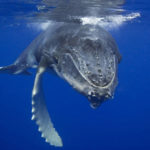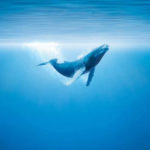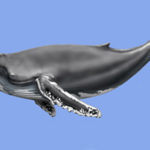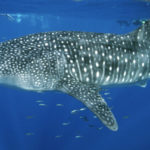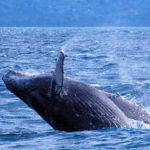Blue whales
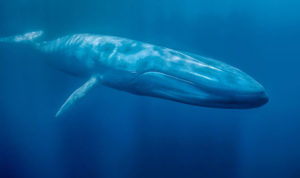 A blue whale belongs to the class of mammals, and is by far the largest animal in the world. Its weight is on the average 100-120 tons, but there are specimens reaching 150 tons. If compared with the African elephant, then the weight of the average blue whale is about 40 elephants, and the body length reaches 33 meters.
A blue whale belongs to the class of mammals, and is by far the largest animal in the world. Its weight is on the average 100-120 tons, but there are specimens reaching 150 tons. If compared with the African elephant, then the weight of the average blue whale is about 40 elephants, and the body length reaches 33 meters.
The habitat of the blue whale is the world ocean from the Arctic to the Antarctic. These giants prefer cold water, very rarely rising to equatorial latitudes. In the Antarctic, whales inhabit the edge of floating ice, in the Arctic the northern subspecies does not reach the drifting ice.
This gigantic animal has a lot of everything (however, see how he manages to jump out of the water in the photo below). The heart of the blue whale weighs about a semitone, the lungs hold air, up to 14 cubic meters, and the diameter of the dorsal aorta is equal to the diameter of the bucket. The color of the body of the whale is not absolutely blue, but has a beautiful, marble pattern, dark gray with a bluish tinge, with light gray spots. On the belly and posterior half of the body, there are more such spots than on the front and back. On the back there is a fin that is 1% of the body length, slightly behind. The head is flattened, convex along the edges, and on the upper jaw a whisker grows, consisting of plates with a fringe of black-resinous color.
These mammals rarely gather in groups of more than 3 individuals. This is due to the fact that it is quite hard to feed the blue giant. A blue whale plankton in the so-called “feeding grounds”, where a large number of microorganisms are concentrated. An adult whale needs about one million calories per day, so it’s not surprising that the animal’s stomach contains 1.5-2 tons of crustaceans.
In Antarctica, the main food of the whale is made of black eyes, 5-6 cm in length, and in the northern hemisphere there are even smaller crustaceans. During feeding, bluewa can submerge underwater for 10-15 minutes.
The period of mating of blue whales is rather extended, occurs mainly in winter in warm waters. The female brings offspring once in two years, and the pregnancy of the blue whale lasts 11 months. The baby is born with a weight of 2-3 tons, a length of 6-9 meters – the size of a small car. The milk-feeding period lasts 7 months, during which the baby is gaining weight of 23 tons, and grows to a length of 16 meters. On average, the daily weight gain is 80-100 kg, which makes it possible to gain a weight of 45-50 tons for a year and a half, and grow up to 20 meters. Sexual maturity of blue whales reach 4-5 years.








